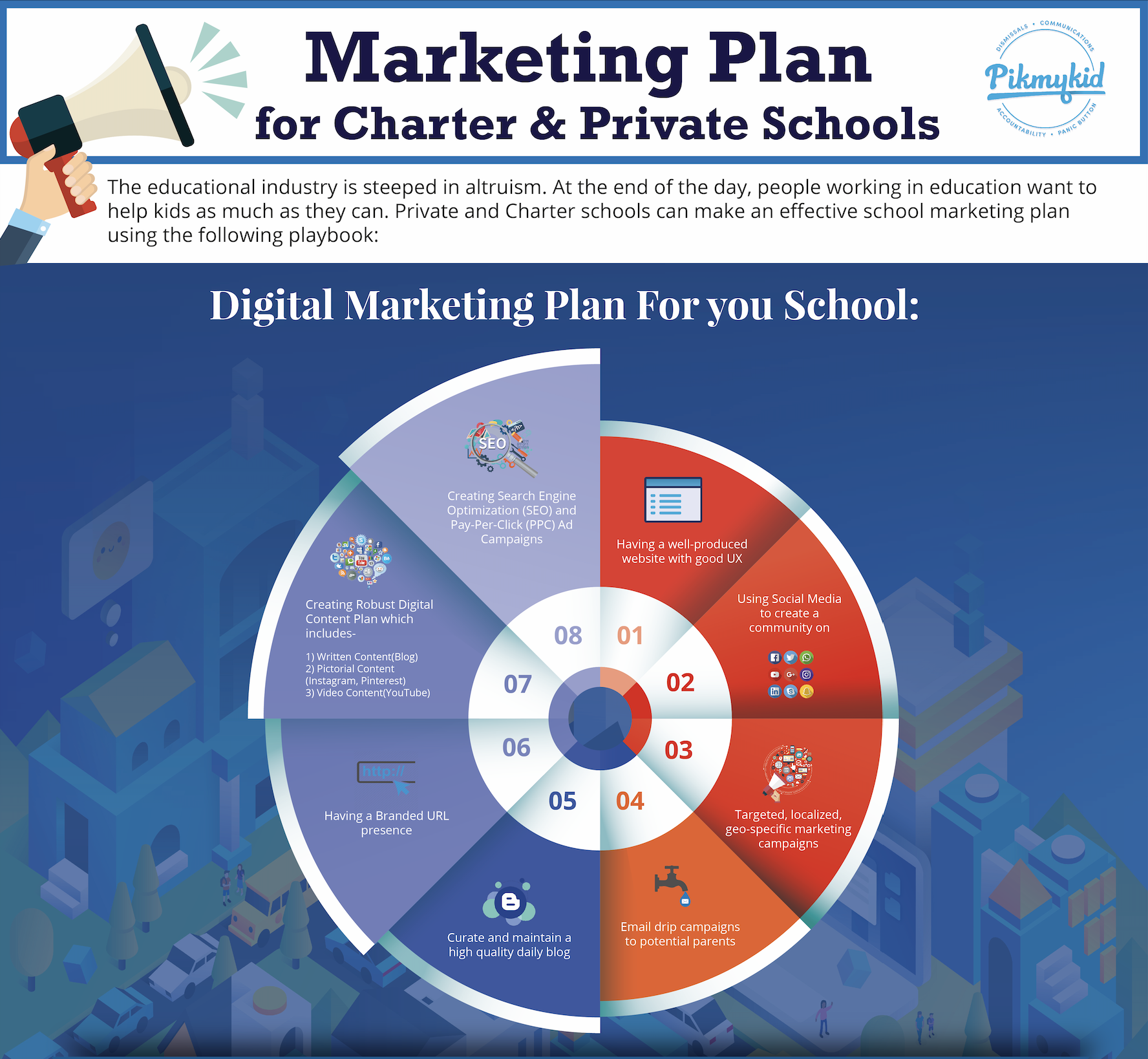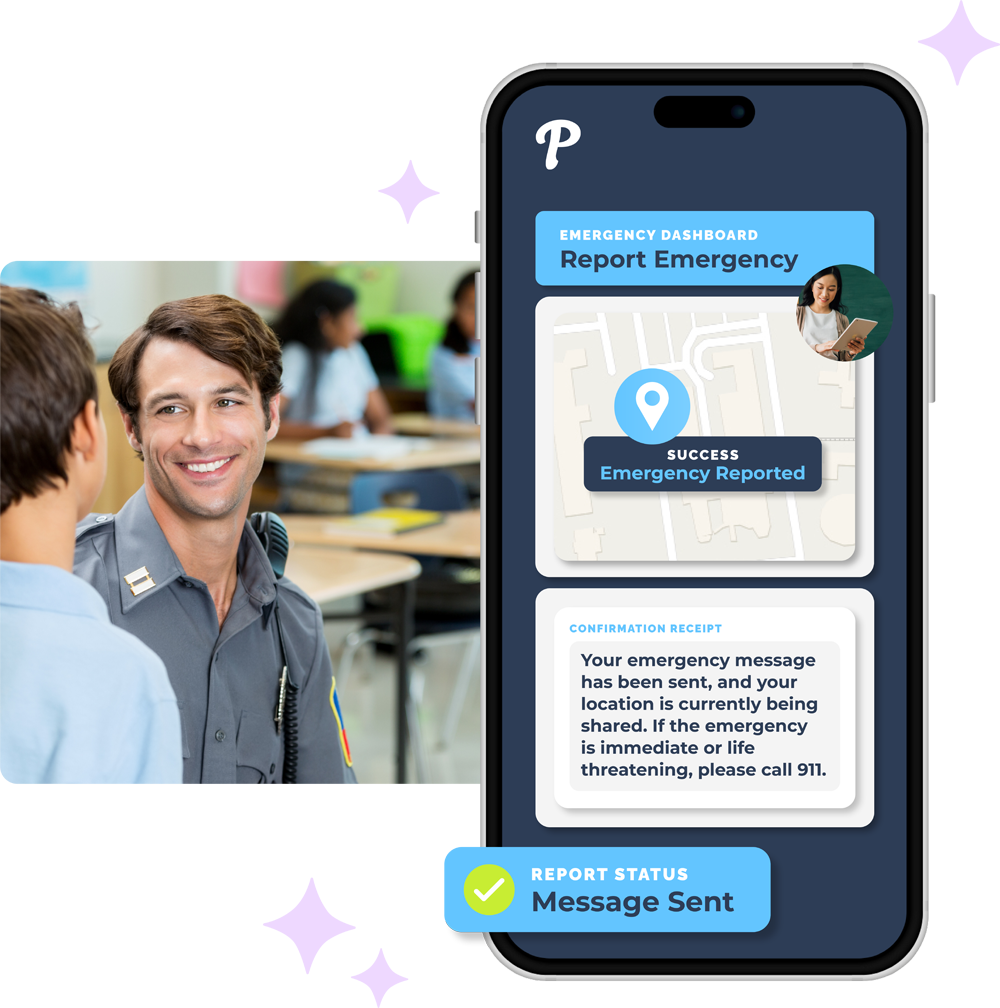Creating a school marketing plan is essential for charter and private schools competing in today’s crowded education landscape. Parents now compare multiple options, evaluating academic excellence, culture, safety, and values before making enrollment decisions. Schools must develop strategies that build awareness, nurture trust, and highlight their unique strengths.
A strong school marketing plan combines storytelling, technology, and consistent outreach. It connects with families where they are—online, in person, and within the community. Charter and private schools that build thoughtful plans experience stronger enrollment, higher retention, and deeper family engagement.
Why a School Marketing Plan Matters
Without a clear strategy, schools rely on word-of-mouth or sporadic campaigns. These efforts often miss families considering alternatives. A school marketing plan gives structure, ensuring every touchpoint communicates the school’s mission and advantages.
For charter and private schools, marketing is not just promotion—it’s survival. Public schools attract families by default, but private and charter institutions must prove value continually. A clear plan allows administrators to measure results and refine approaches based on evidence.
Step 1: Define Your School’s Unique Value
Every school has strengths, but not all highlight them effectively. Start by identifying what makes your school different. Is it academic excellence, specialized programs, faith-based values, or personalized instruction? Capture those qualities in a compelling value proposition.
Your value proposition becomes the foundation of your school marketing plan. Use it consistently across websites, brochures, social posts, and open house presentations. Parents need to hear the same message reinforced repeatedly before trusting your brand.
Step 2: Set Clear Goals
A marketing plan without goals is directionless. Charter and private schools should define measurable outcomes early. Goals may include boosting enrollment by 15%, increasing event attendance, or growing social media engagement by 30%.
When setting goals, align them with overall school objectives. If the school prioritizes retention, develop strategies to engage current families. If expansion is the priority, focus on outreach campaigns targeting prospective families.
SMART goals—specific, measurable, achievable, relevant, and time-bound—keep your plan realistic and accountable.
Step 3: Understand Your Audience
Parents make enrollment decisions based on factors like academic programs, location, values, extracurriculars, and student support services. Schools must understand these priorities. Conduct surveys, host focus groups, or review enrollment data for insights.
Segment your audience by grade level, household demographics, or interests. Messaging for preschool parents differs from messaging for high school families. Personalized communication increases impact and builds stronger relationships.
Step 4: Build a Strong Digital Presence
Today’s parents begin their school search online. A professional website is the cornerstone of your school marketing plan. Ensure it is mobile-friendly, fast, and easy to navigate. Highlight admissions information, tuition details, programs, and safety protocols.
Search engine optimization (SEO) helps your school appear when families search “private schools near me” or “best charter schools.” Optimize your website with keywords like “school marketing plan,” “private school admissions,” and program-specific terms.
Include testimonials, photos, and videos showcasing authentic experiences. Parents trust real voices from students and families more than institutional messaging.
Step 5: Use Social Media Effectively
Parents spend hours daily on social media. Charter and private schools must meet them there with meaningful content. Use Facebook, Instagram, and LinkedIn to share student success stories, highlight events, and celebrate achievements.
Consistency matters. Post several times weekly and maintain a unified brand voice. Use images and short videos to increase engagement. Encourage staff, students, and families to share posts to amplify reach.
Paid advertising expands visibility. Target local families searching for education options with clear calls to action. Even small budgets deliver strong results when targeted correctly.
Step 6: Strengthen Community Engagement
Word-of-mouth remains one of the most powerful enrollment drivers. A school marketing plan should include community partnerships, events, and parent ambassador programs. When families see involvement beyond campus walls, trust deepens.
Host open houses, sponsor local events, and participate in fairs or festivals. Encourage current families to invite friends to school activities. Provide branded materials and talking points so families can easily share positive experiences.
Step 7: Personalize Admissions Communication
Families expect responsive, personalized communication during the admissions process. Automated email workflows nurture leads by sharing relevant content based on inquiry stage. Prospective kindergarten parents might receive information on readiness, while high school families receive college-prep materials.
Consider using customer relationship management (CRM) tools to track and manage admissions leads. A structured communication plan ensures no prospect feels ignored.
Step 8: Showcase Safety and Technology
Parents want assurance their children are safe and supported. Highlight technology that improves security, communication, and classroom engagement. Demonstrating a proactive commitment to student well-being builds confidence.
Share updates about digital tools, safety drills, or new systems that simplify daily routines. Transparency creates reassurance and differentiates your school from competitors.
Step 9: Leverage Data and Analytics
Successful school marketing plans use data to guide decisions. Track website traffic, social media engagement, email open rates, and event attendance. These insights reveal which strategies work best.
Regularly review analytics and adjust tactics accordingly. If open house attendance is low, revisit outreach messaging. If certain ads perform well, increase budget allocation. Continuous improvement strengthens results.
Step 10: Empower Your Team
Marketing is not the responsibility of one administrator. Teachers, staff, and even students influence perception. Train faculty on how to discuss the school’s value proposition consistently. Provide materials they can share with prospective families.
Create a culture where everyone feels ownership of enrollment and engagement goals. Collaboration increases authenticity and impact.
Step 11: Highlight Student and Alumni Success
Parents want proof of outcomes. Share stories of graduates attending top universities, students winning competitions, or alumni leading impactful careers. Use multiple channels to highlight these stories, including your website, newsletters, and social platforms.
These narratives connect emotionally and provide tangible evidence of your school’s effectiveness. Success stories are marketing tools with lasting influence.
Step 12: Create a Content Calendar
Consistency keeps your marketing organized. Develop a yearly calendar mapping campaigns, social posts, email sends, and events. Align communication with enrollment timelines—such as application deadlines or open house seasons.
Content calendars prevent gaps and ensure resources are allocated effectively. They also allow schools to plan themes and coordinate across departments.
Step 13: Budget Wisely
Charter and private schools often operate with limited budgets. A school marketing plan helps prioritize spending on high-return strategies. Focus investments on website improvements, digital advertising, and community events.
Track ROI for each activity. If digital ads outperform print brochures, reallocate funds accordingly. Smart budgeting ensures maximum impact.
Step 14: Review and Refine Regularly
A school marketing plan is not static. Review outcomes quarterly and update tactics as needed. External factors—such as economic changes or enrollment trends—may influence strategy.
Regular refinement keeps your plan agile and effective. Schools that remain adaptable stay competitive in evolving education markets.
Final Thoughts
A well-structured school marketing plan positions charter and private schools for long-term success. By defining value, setting goals, engaging audiences, and measuring results, schools attract families and strengthen community trust.
Marketing requires consistency, creativity, and collaboration. With a clear plan, your school can thrive in today’s competitive education landscape. For more insights – Subscribe to the Pikmykid blog.



